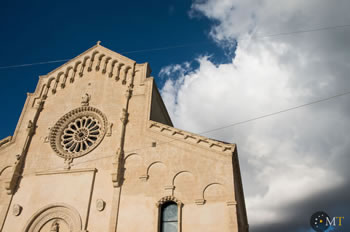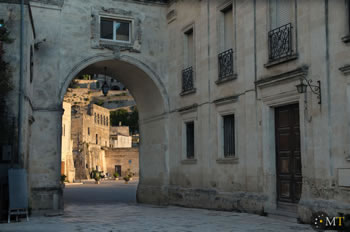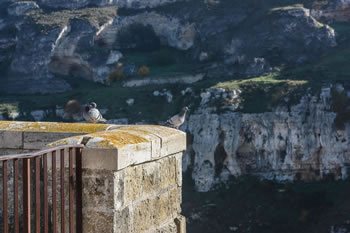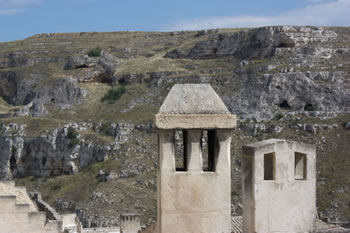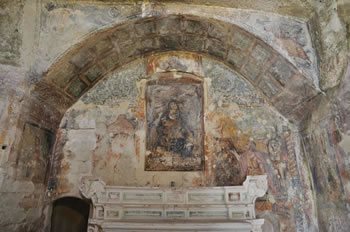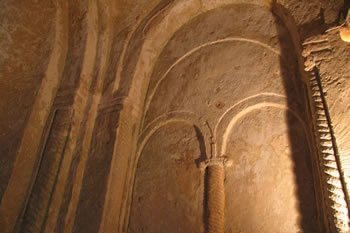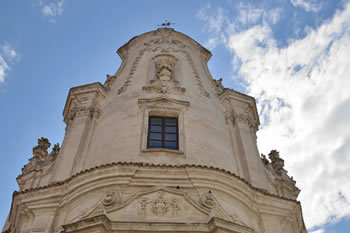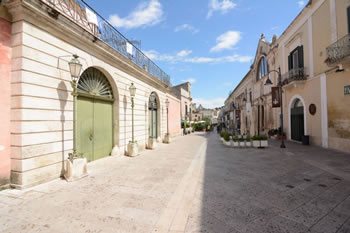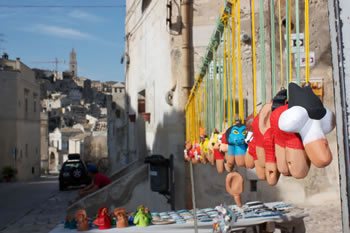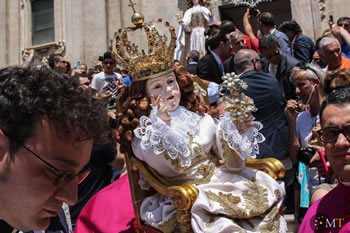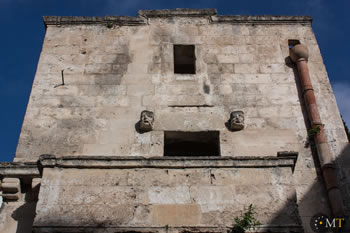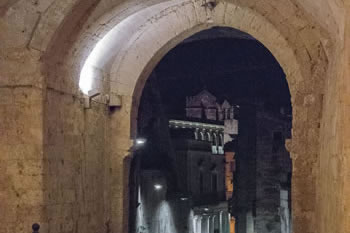The main places of interest to visit in Matera are the Sassi, the Piano where the historic center is developed and the nearby Murgia Materana Park. These three places merge into each other, offering the possibility of discovering the city through an evocative itinerary that runs through them.
The historic center skirts the upper part of the Sassi and is connected to it through arches, small bridges and narrow streets that descend from the plain to the ancient districts connecting these two very different environments.
To enter the Sassi, one only has to descend through one of the many entrances that descend downward from the plain.
It is also possible to admire the Sassi from above through some overlooks that are located at different points in the historic center.
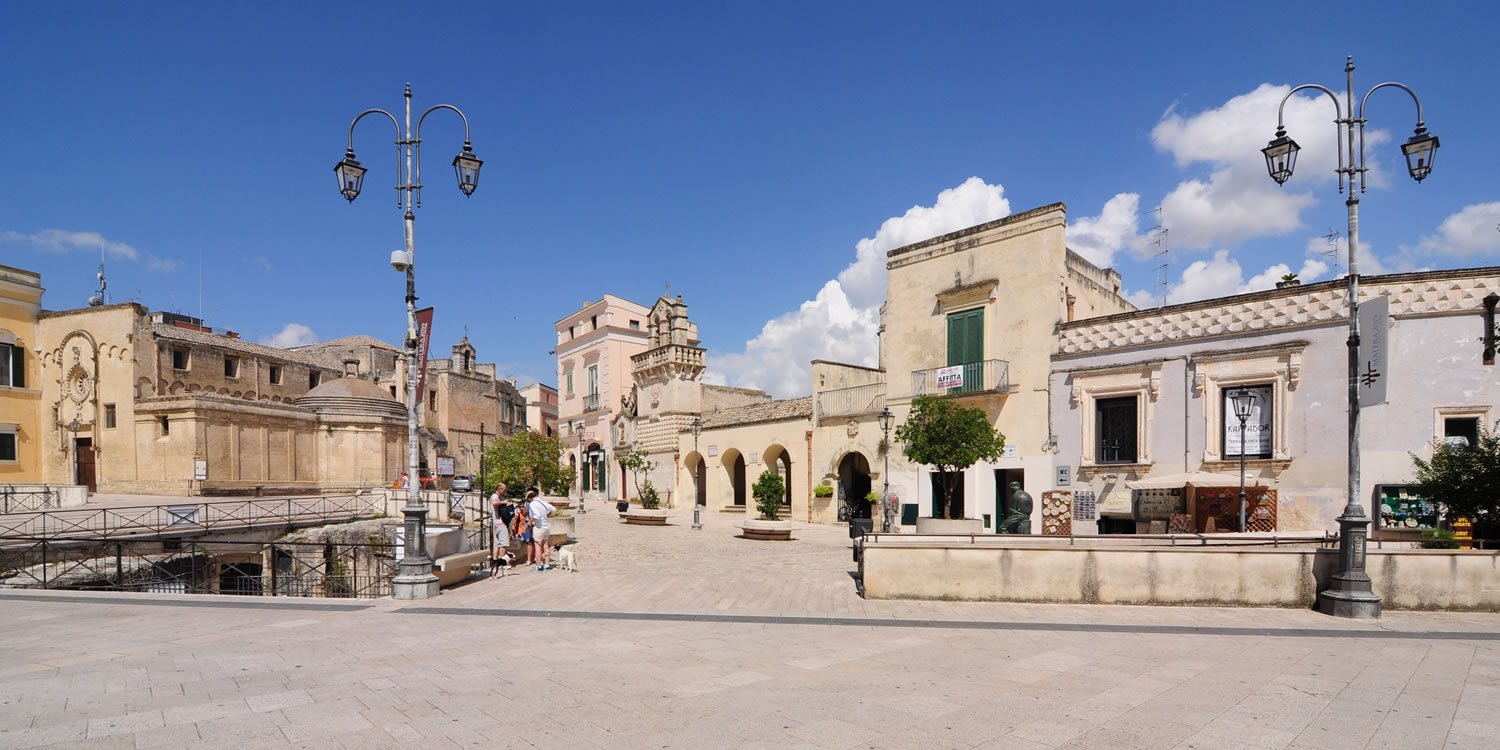
Facing the Sassi of Matera, on the opposite side of the great canyon carved by the stream that laps them, it is possible to observe a rocky landscape that runs along the twenty kilometers of the Matera ravine.
Observing the steep slopes, plateaus and terraces of the Murgia Park, it is possible to imagine what was the primordial state of the places on which Matera arose. There are a large number of caves and rock shelters that over the centuries have been inhabited, transformed into villages, churches, farmhouses and factories of all sorts.


 Home
Home

